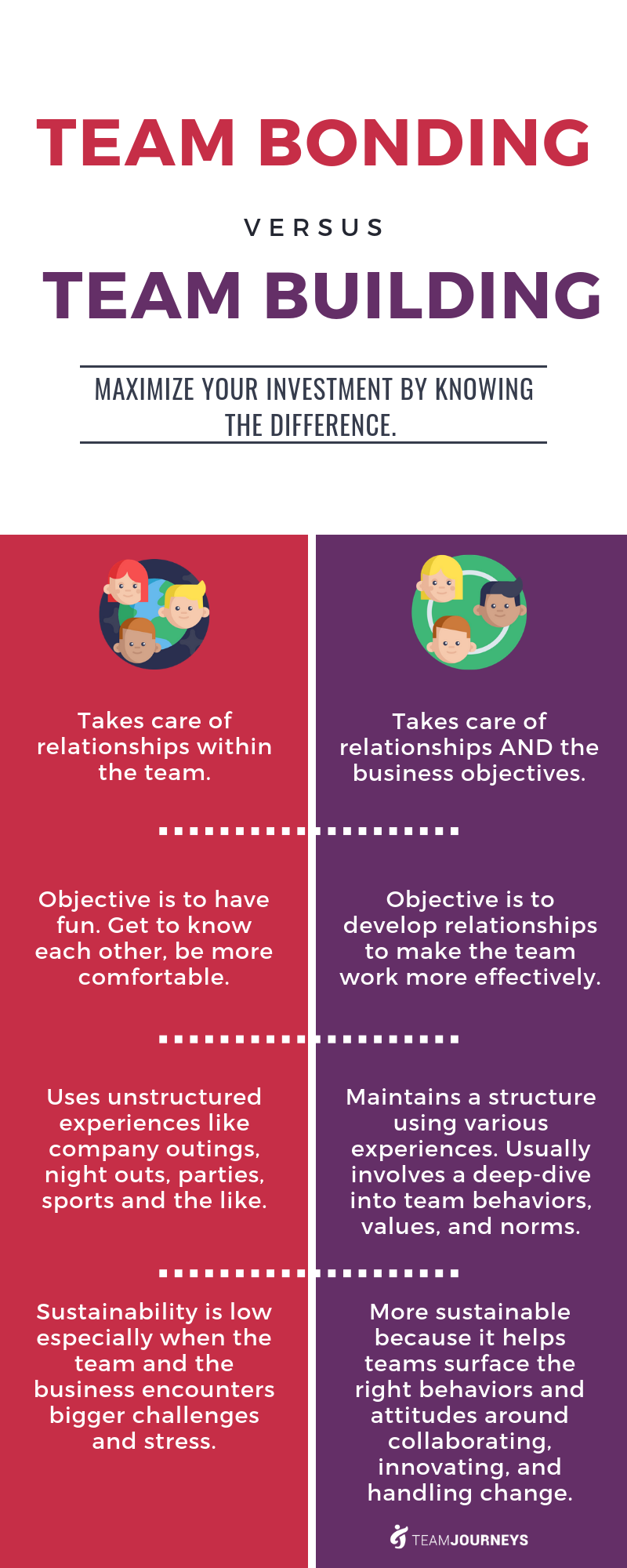Team Bonding vs Team Building
There is a fine line that separates Team Bonding vs Team Building — and knowing the line that separates the two may just help you get the return on your investment and create the impact that you wanted in the first place.
Companies invest a lot in their people; even more so today when the importance of employee engagement has been on a steady rise. As a result, we see more and more activities being organized that takes teams out of town, on nights out, happy hour or company vacations.
While there is no discounting the value of those kinds of activities to promote team bonding, often times, we’ve seen companies wonder why their team’s performance isn’t improving despite all that investment.
Let’s face it. In today’s volatile, uncertain, complex and ambiguous business environment, team bonding is not enough. To understand why this is and what you can do about it, we need to differentiate two things — Team Bonding vs Team Building.
What’s the difference? And what difference does that make?
Looking at impact, team bonding activities aim to make a dent on the relationships within the team. On the other hand, a well-designed team building program will not only improve relationships but also impact the business objectives by way of making teams aware of how they can perform more effectively.
Another major difference would be in objectives and methods. They could not be more different. For pure team bonding activities, most times, there is a lack of clear objectives that are set. If any, they mostly revolve around having fun, getting to know each other, and becoming more comfortable and trusting of each member of the team. As a result, activities and methods are mostly unstructured and in the form of simple events and activities that are readily available and easy to organize.
For team building activities, the objectives target specific areas that the team can improve on or what values and attitudes will take the team to the next stage. So while fun is almost always on the agenda, an effective team building program will surface the learning on the individual, team, and organizational levels. This also ensures that these insights circle back to business impact and behaviors that will make both the employee and the teams perform better. Because of this, virtually any activity can be designed to match the organization’s objectives.
What happens after?
For both types of programs, members feel a certain high — one that gets them excited to go back to work, and gives them a pleasant memory to talk about. But the similarities stop there. Once challenges come in, once the stress and pressures make themselves felt, the effects of team bondings won’t last as long as that of a team building. The primary reason for this is that in effective team building programs, teams dive into what makes them successful, surfacing what they could be doing better. Teams plan out what they should do when they go back and encounter the stress and challenges of hitting targets, of closing sales and dealing with change. Add in an experienced facilitator and the potential impact of a team building program on a company’s business results is limitless.
In short, the right team building, when addressing key needs, when designed with a clear intention and when tied to key strategies and business goals, can have a lasting effect not only on employees, but on the business as a whole. It could give you more than just a return on your investment.

